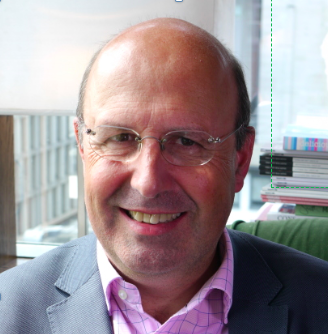You can sign up to our LinkedIn newsletter here.
Future Fear: Part One – Imagining the Worst
Fear of the First Step
Procrastination arises from various reasons, but often, at its core, lies the fear of taking the first step. Typically, this fear is rooted in the fear of failure. Perhaps you’ve attempted something numerous times, failing to achieve your goal each time. A classic example is trying to establish a dieting habit. You repeatedly promise yourself that you’ll lose weight, maintain it, and exercise; yet each time, three to six months into the process, you find yourself back at square one or even in a worse situation. This leads to learned hopelessness—a belief that there’s no point in trying again because it never works. The hope of change is lost. Taking that first step feels impossible because what’s the point of venturing down a path you know will likely fail?
Opinions of Others
The opinions of others can become significant barriers to taking the first step. You become fearful of the opinions of others. I’ve often observed that when individuals in demanding corporate environments choose to change paths and create a different future, their peers can be powerful naysayers. “Oh, you shouldn’t do that. You’ll never make it work.” This often arises from their jealousy of your courage to pursue a desired future despite your fears.
A Compelling Vision of the Future
Another hurdle you face is the need to define your vision for the future clearly—map out the appealing destination you aspire to reach. It becomes challenging to move forward if you haven’t fully imagined the benefits you will gain and the problems you will avoid in the future that come from the first step.
For example, when transitioning from being an independent consultant with multiple short assignments to adopting a Portfolio Executive style that emphasises longer-term relationships and fewer clients, one must fully envision the benefits of this new approach. Many do not recognise how different it will be when you only need to find one new client each year or become a trusted advisor as part of an executive team rather than constantly finding and fixing problems before moving on. Lacking a vivid picture of that future reduces motivation to take that essential first step.
Making a Leap, not a Step
Another factor that may hold you back is setting a too ambitious first step. Imagine you’re an independent consultant aiming to transition to a Portfolio Executive role, but you set your first step as winning your first Portfolio Executive client. That can feel monumental.
Ultimately, taking that first step can be daunting because of fear—particularly the fear of failure, especially when other factors amplify that fear. So, how can you face these challenges? I’ll discuss each with you and share some helpful strategies for overcoming them.
Fear of Failure
In my experience, the best way to address the fear of failure, when it has become learned hopelessness, is to radically reframe the outcome you want to achieve and limit it to the simplest, most accessible first step. I know that pasta, potatoes, rice and bread always increase my weight. But I love them! Rather than decide that I am going to eliminate these in one big step altogether, I chose to ‘avoid’ them as a first step. ‘Avoid’ started with no bread for breakfast and no other restrictions. I weighed myself every morning so I would get immediate feedback. Once I had ‘avoided’ bread consistently for a month at breakfast time, I tackled bread at lunchtime and potatoes in the evening. A year later, I consistently avoided pasta, potatoes, rice, and bread. But I keep the freedom of ‘avoid’ rather than ‘eliminate’. My daily weigh-in gives me immediate feedback when I don’t avoid it. My inflammatory reaction to these foods means I add a couple of pounds in one meal. I no longer feel hopeless about my weight. Even if I return from travel with an extra five or six pounds, I know I can lose it over four to six weeks.
Fear of the opinion of others
‘You have failed, and I knew you would.’
You can easily imagine that ‘I told you so’ moment and remember all of the past humiliations. Instead, co-opt your friends to support and encourage you as you step out. Their support motivates you, and in case of failure, you share responsibility.
‘You may have achieved your goal, but the goal wasn’t worth the cost.’
What you value can be different from others. High costs for them can be low costs for you. Remember, it’s fear of others’ opinions that counts. You can be clear about the costs and benefits to you and discuss how this compares for them.
My father believed that self-employment or building a business could never bring me sufficient benefits to outweigh the risks involved. He always asked, ‘When would I get a proper job?’. He valued the life-long tenure and guaranteed salary of academic research more than the freedom and excitement I had chosen.
Eventually, I realised we had radically different values. I knew he would never believe my achievement was worth the cost. I accepted his disapproval and let it go.
‘Your success has taken you out of our clique: you are no longer one of us.’
‘Tall poppy’ syndrome is when a group wants to maintain everybody at the same level. Tall poppies have their heads cut off. We all have a strong need to belong. The fear of exclusion can be overwhelming.
In 2000, I was invited to become a partner in my professional services firm. The culture established partners as a class apart with unique privileges and rights. I feared that becoming a partner would distance me from my peers and the junior people I enjoyed working with. I also struggled to imagine how I would fit in with the partner group I was joining.
Ultimately, I accepted that there would be a transition, and I developed strategies to minimise the personal impact. It wasn’t an unfounded fear, but by facing it, I found a way to live with it.
Fear of ambiguity and uncertainty
You may believe you need to know everything before taking the first step. However, you are faced with both known unknowns and unknown unknowns. You must also confront paradoxes, dilemmas and unquantifiable risks and outcomes.
Two considerations can help you to address this fear. Firstly, recognise the cost of analysis paralysis. There is a law of diminishing returns as you seek to become fully informed. Instead, identify two or three critical factors that will influence your decision and assess those as best you can.
Secondly, acknowledge that ‘doing nothing’ is neither cost nor risk-free. Doing nothing continues to require tolerance of ambiguity and uncertainty, but the only difference is you are already living with them.
Fear of Taking a Leap
Stepping out of full-time, salaried, permanent employment is a leap. I believe a helpful parallel exists with the leap a couple takes when their first child is born. In some ways, nothing can prepare you for the emotions and demands of parenthood. But you do get almost nine months to become more familiar with the idea and implications of parenthood. Antenatal classes, buying a cot, decorating the nursery, booking parental leave and fending off (or accepting) the advice of friends and family all signal the substantial leap into parenthood. Similarly, by preparing to leave your employment over six to nine months, you can put in place many of the resources, support, plans and even initial clients before giving notice. Each small step of preparation makes you and your family more familiar with the implications of the transition. Indeed, you can benefit from the equivalent of antenatal classes, buying essential equipment, preparing a suitable workspace, arranging your holidays so that you take them as part of your notice period and engaging appropriate advice and help from friends, family and professionals.
Fear of Loss
Any transition involves leaving something behind. Fear of losing those things that you have as you step out into the new can be hidden but real. To address this fear, identifythose things you are giving up and those around you may have to sacrifice. If you move from working at an office to working from home, you will lose the camaraderie of the office; your spouse may lose the freedom of uninterrupted time at home. You may be able to reduce or avoid some of those losses. You may need to pre-mourn them by denial, anger, bargaining and reluctant acceptance. Without a clear envisioning of the benefits of the transition and buy-in to those benefits from those most affected, the fear of loss may outweigh your resolve to take the first step.
Conclusion
Fear is a powerful and essential emotion that offers important information about how we feel about our current and future situations. Teasing out the different elements of fear and finding an approach to address them will enable you to take the first step confidently and without regret.
Future Fear: Part Three – Impostor Syndrome

Charles McLachlan is the founder of FuturePerfect and on a mission to transform the future of work and business. The Portfolio Executive programme is a new initiative to help executives build a sustainable and impactful second-half-career. Creating an alternative future takes imagination, design, organisation and many other thinking skills. Charles is happy to lend them to you.
